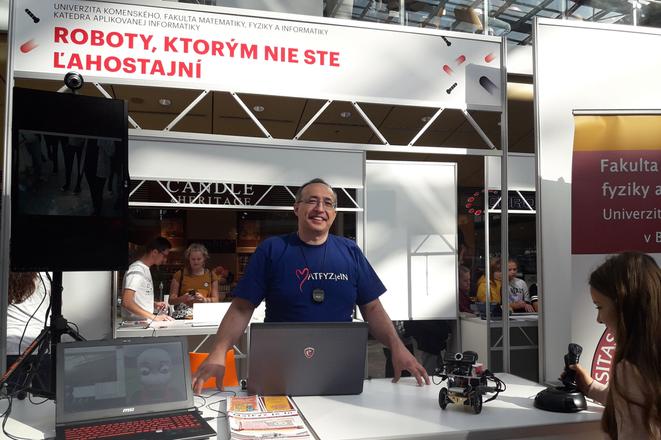"In an effort to imitate the human brain, we have devised things that are unlike our brain. We have neural network invention spurred by how we see, yet in technical terms we have something better," says computer scientist ANDREJ LÚČNY from the Department of Applied Informatics at FMFI UK.
In an interview he talks how computers and robots see, how they learn, what is machine learning and explains the basics behind the idea. In doing so, Lúčny also mentions how online translators do their job so quick.
How can a computer see?
We must first consider its parameters and performance. Twenty years ago, it was much more challenging than today. Proportionally to performance we come up with methods that allow it to see. We move from simpler to more complex solutions as computing power increases.
Can you explain it in a more specific example?
There is an exercise I have been dealing with for a long time and as better technology emerged my approach changed. It involves a robot following a ping-pong ball. What I did at first was that I took an image from a camera and found what is called edges: places where the colours change distinctly. As the ball has the shape of a circle, I found its leftmost and rightmost point. If all went well during a test I indicated that it was a circle. However, there was a catch. The whole component must be uninterrupted, which is very unlikely in real life.
For example, a floor with a wood texture would pose be a problem because the texture has many edges. When a robot has a more powerful on-board computer, we can use methods that statistically try to make out a circle. In this case the component does not have to be uninterrupted, it is created piece by piece and this requires power. Finally, we can use systems that are taught how to look for the ball. Today, on-board computers are so powerful that they can run a neural network able to convert an image so that only the edges that make up objects are visible.

Is the research inspired by what we know about various human systems?
One thing is revealed when a slow program is following the ball. To a great extent human visual perception works with the anticipation of what comes next. Otherwise, there would not be enough time. A robot, on the other hand, takes things step by step. When it sees a ball to the left, it turns in that direction, then stops, looks again and repeats the process. A better approach would be to make the robot move as smoothly as we do. But this is a challenge.
It takes time for the robot to follow the ball and realize where it is. Old systems took an entire second to do so. Today we are talking milliseconds. However, during this time the ball may be elsewhere and a delay occurs. There are two ways to deal with it. Thanks to faster computers the delay will decrease to the point where it will be unnoticeable. The second path is emulating prediction. This is something interesting, but it has not yet been resolved. It's in our heads.
So the key to solving the problem could be a better understanding of the human brain?



 Andrej Lúčny with his robot. (source: Andrej Lúčny)
Andrej Lúčny with his robot. (source: Andrej Lúčny)